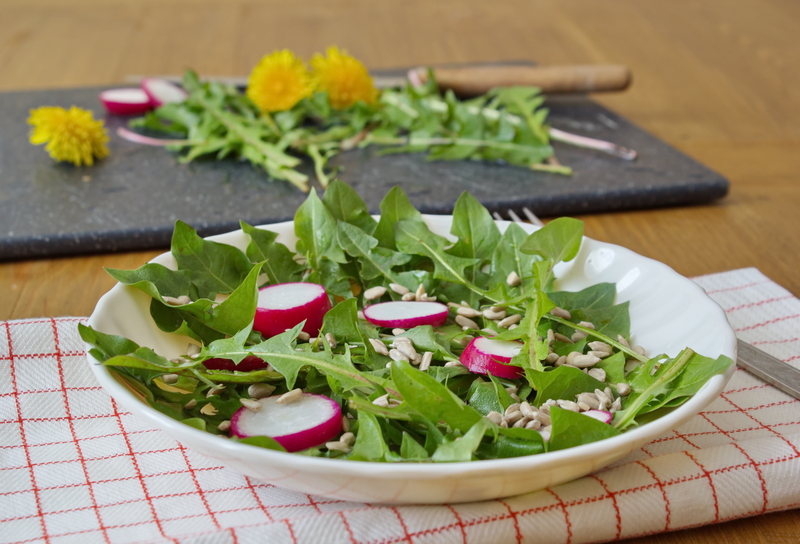Conquer Your Garden Foes: 3 Essential Tips for Weed Control
Posted on 18/06/2025
Do unruly weeds threaten the beauty and health of your garden? If you're frustrated with persistent garden weeds stealing nutrients, water, and space from your beloved plants, you're not alone. Weed control is a crucial element of successful gardening, directly impacting the growth and aesthetics of your landscape. In this comprehensive guide, you'll discover the top three weed control strategies that are proven to help you defeat these garden foes and keep your outdoor sanctuary healthy, lush, and vibrant all season long.
Why Weed Control Matters in Every Garden
Weeds are much more than just a cosmetic nuisance in your yard. They can:
- Compete for nutrients, water, and sunlight with your flowers, vegetables, and shrubs
- Harbor pests and diseases that can put your entire garden at risk
- Reduce crop yields and stunt plant growth by crowding out desired plants
- Drain your time and energy as you battle constant outbreaks
Strategic weed management is the secret to a thriving, low-maintenance garden. With the right knowledge and approach, you'll keep these persistent invaders under control while protecting the beauty and bounty of your landscape.

Tip #1: Start with Smart Prevention
Lay the Groundwork for Weed-Free Gardening
The most effective way to control weeds is to stop them before they take root. Prevention is your first line of defense! By creating conditions that discourage weed growth, you minimize the need for constant weeding and intensive interventions.
- Mulch Wisely: Applying a thick layer of organic mulch, like wood chips, bark, or straw, can suppress weed seedlings by blocking sunlight. Mulch also retains soil moisture and adds nutrients as it breaks down, making it a win-win for weed control and plant health.
- Use Landscape Fabric: For persistent or large-scale weed problems, lay down a breathable, woven landscape fabric beneath your mulch. This creates a durable barrier that prevents weeds from reaching the soil surface.
- Plant Densely: Filling gaps with groundcovers, dense perennials, or closely spaced vegetables shades the soil, leaving little room for weeds to sprout.
- Edge Your Beds: Install physical garden edging to stop creeping weeds like grass and invasive vines from invading flower beds and borders.
Tip: Always inspect new soil, compost, and mulch for weed seeds before using them in your garden. *Prevention ensures that you're not importing more trouble than you solve!*
Tip #2: Master Manual Weed Removal Techniques
Pull Weeds Effectively & Effortlessly
Even with diligent prevention, some weeds will inevitably appear. Manual removal remains one of the most eco-friendly and satisfying weed control methods. To make weeding easier and more effective, follow these essential tips:
- Weed Early & Often: Remove weeds while they are small and before they flower or set seed. Young weeds are easier to pull and less likely to regrow.
- Weed After Rain: Pulling weeds from moist soil helps to remove the entire root system, reducing the chance of regrowth. Gently wiggle the weed to loosen the roots before pulling.
- Use the Right Tools: Equip yourself with a hand weeder, hoe, or fork. These tools make it easier to dislodge weeds entirely, especially those with taproots or rhizomes.
- Dispose Responsibly: Do not toss weeds with seeds or invasive roots into your compost pile. Instead, bag them and dispose of them in the trash to prevent future outbreaks.
Pro Tip: Stick to a schedule! Frequent, short weeding sessions--rather than marathon pulls--make the task manageable and prevent weed populations from getting out of hand.
Tip #3: Choose the Right Herbicides (If Needed)
Apply Chemicals Carefully and Safely
While organic and manual methods should always be your priority, there are times when persistent weeds call for stronger measures. If you decide to use herbicides for weed control, make sure to select the right products and use them responsibly to protect pets, pollinators, and the environment.
- Selective Herbicides: These target specific types of weeds (like broadleaf or grassy weeds) without harming your lawn or desired plants. *Read the label carefully* to match the product to your needs.
- Non-Selective Herbicides: These kill any green plant they touch and are typically used for clearing sidewalks, driveways, or sites being renovated.
- Spot-Treat Problem Areas: Rather than blanket-spraying, apply herbicides only to trouble spots. Use a shield or cardboard to prevent drift onto garden plants.
- Natural Alternatives: Consider organic options like vinegar-based sprays or boiling water for cracks and hard surfaces. *Always follow recommended safety guidelines!*
Important Safety Tips:
- Wear gloves, goggles, and protective clothing when using chemicals.
- Keep children and pets away from treated areas until it's safe.
- Never apply herbicides on windy days or just before rain.
Bonus: Routinely Monitor Your Weed Control Efforts
Stay Vigilant to Keep Weeds at Bay
Even after applying the three tips above, ongoing monitoring is key to successful, long-term weed management. Set aside a regular time--whether weekly or monthly--to patrol your garden, pulling new invaders or topping up mulch as necessary. Stay alert during early spring and autumn, when many weeds tend to sprout and establish.
- Inspect close to plant bases and among dense foliage, where sneaky weeds might hide.
- Record notes about recurring problem areas to adjust your strategies next season.
- Rotate crops and change planting patterns to disrupt weed life cycles in your vegetable beds.
Frequently Asked Questions About Weed Control
1. What type of mulch is best for weed suppression?
Organic mulches, such as shredded bark, straw, pine needles, or composted leaves, are effective at blocking light and preventing weed seeds from germinating. Inorganic mulches like landscape fabric and gravel can also work, especially for paths or permanent beds.
2. Can hand-pulling weeds cause them to spread?
Not if you remove the entire root system, especially for tap-rooted plants like dandelions. However, some aggressive weeds can resprout from tiny root fragments. For these, careful digging or specialized tools may be needed.
3. Are chemical herbicides safe for vegetable gardens?
Only use herbicides labeled for use around edible crops, and follow application instructions to the letter. Organic alternatives or manual methods are generally safer for food gardens.
4. How can I prevent weeds in my lawn?
Mow at the right height, overseed bare spots, and feed your lawn to encourage dense, healthy turf that chokes out unwanted weeds naturally.

The Last Word: Outsmarting Your Garden Foes
Effective weed management is about more than pulling a few weeds here and there. It's a combination of proactive prevention, regular maintenance, and (when necessary) the strategic use of targeted products. Consistency and attention to detail are your greatest allies in conquering your garden foes.
By following these three essential strategies for weed control, you'll not only preserve the beauty and productivity of your garden but also create an outdoor retreat you can enjoy, season after season.
Ready to Cultivate a Weed-Free Garden?
Start today by selecting one of these proven tips and put it into action. Over time, your efforts will pay off with fewer weeds, healthier plants, and a garden you'll truly love to tend. Happy gardening!



